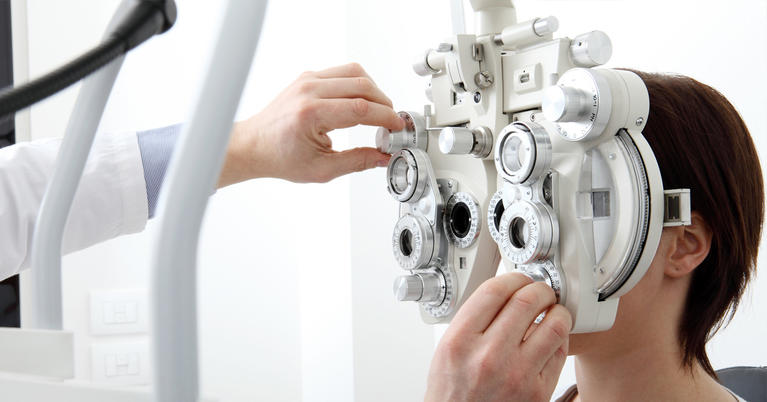The Benefits And Drawbacks of Various Refractive Surgical Procedures for Improved Eyecare

LASIK Surgical Treatment
LASIK surgical treatment is a typically executed refractive treatment that intends to fix vision issues such as nearsightedness, astigmatism, and farsightedness. This medical strategy has gotten appeal as a result of its efficiency in offering clients with clearer vision and lowering their dependency on glasses or get in touch with lenses. Throughout the treatment, a thin flap is developed on the cornea, and a laser is used to improve the underlying tissue, dealing with the refractive mistake. The flap is then rearranged, permitting quick recovery and marginal pain for the client.
Among the main benefits of LASIK surgery is the quick improvement in vision experienced by many clients. Many people see a significant enhancement in their eyesight quickly after the procedure, with marginal downtime required for healing. Additionally, LASIK is understood for its high success price and low occurrence of problems when performed by proficient cosmetic surgeons. Like any kind of medical treatment, LASIK also brings some dangers, consisting of completely dry eyes, glow, halos, and under or overcorrection of vision. It is crucial for people considering LASIK surgical procedure to undergo a comprehensive examination by an eye care expert to identify if they are ideal candidates for the treatment.
PRK Procedure
The PRK treatment, additionally understood as Photorefractive Keratectomy, is a type of refractive surgical procedure that intends to correct vision issues comparable to LASIK surgical treatment. Unlike LASIK, which entails creating a flap in the cornea, PRK works on the surface area layer of the cornea.
One of the advantages of PRK over LASIK is that it eliminates the risk of flap-related problems since no flap is developed during the surgical treatment. This can be useful for individuals with slim corneas or those included in get in touch with sports where eye trauma is a possibility. Nevertheless, the recovery time for PRK is normally much longer contrasted to LASIK, as the external layer of the cornea needs time to regrow after the procedure. In spite of the longer recuperation duration, PRK can be an appropriate choice for people seeking vision modification surgery.
SMILE Surgical Procedure
A sophisticated refractive surgical treatment method gaining appeal in the area of ophthalmology click is SMILE Surgical treatment. Tiny Laceration Lenticule Removal (SMILE) is a minimally intrusive treatment that remedies vision by reshaping the cornea utilizing a femtosecond laser. Unlike typical LASIK surgery, SMILE Surgical procedure involves developing a tiny laceration in the cornea to remove a lenticule, which leads to much less disturbance to the corneal structure and possibly much faster recovery times.
Among the key benefits of SMILE Surgical treatment is its capacity to treat myopia (nearsightedness) and astigmatism with high precision, leading to exceptional visual results for clients. The minimally invasive nature of the treatment additionally lowers the threat of complications such as dry eye syndrome, making it a positive option for individuals seeking refractive surgical procedure.

LASEK Method
Having discovered the benefits and factors to consider of SMILE Surgical treatment, an additional noteworthy refractive surgical procedure strategy worth analyzing is the LASEK Technique. LASEK, which means Laser-Assisted Subepithelial Keratectomy, is a kind of laser eye surgical treatment that aims to fix refractive mistakes such as nearsightedness (nearsightedness), hyperopia (farsightedness), and astigmatism.
Unlike LASIK, LASEK does not involve developing a corneal flap. Rather, throughout a LASEK procedure, the cosmetic surgeon uses a diluted alcohol remedy to loosen the thin outer layer of the cornea, recognized as the epithelium.
Among the primary advantages of LASEK is that it can be ideal for people with thin corneas that may not be great candidates for LASIK. In addition, LASEK normally leads to minimal post-operative pain and a quicker recovery time compared to PRK. The visual recuperation process with LASEK may be a little longer than with LASIK.
Implantable Get In Touch With Lenses
Implantable Contact Lenses use a lasting vision correction option for individuals looking for an alternative to traditional contact lenses or glasses. These lenses, also called phakic intraocular lenses, are operatively put right into the eye to remedy refractive mistakes such as nearsightedness (nearsightedness), hyperopia (farsightedness), and astigmatism. andalusia pediatrics. Unlike conventional contact lenses that rest on the surface area this link of the eye, implantable call lenses work within the eye itself, offering clear vision without the need for everyday upkeep or elimination
Among the crucial benefits of implantable get in touch with lenses is their permanence. As soon as placed, they can remain in the eye indefinitely, using secure and consistent vision adjustment. In addition, these lenses can be an excellent option for people that are bad candidates for laser eye surgical treatment or that choose a relatively easy to fix vision improvement procedure.
However, implantable contact lenses do lug some threats, consisting of the capacity for cataracts or increased eye pressure. It is essential for people considering this choice to talk to an eye treatment professional to identify if implantable get in touch with lenses are the appropriate selection for their specific needs and eye wellness.
Conclusion
In verdict, each kind of refractive surgery has its own advantages and negative aspects. LASIK surgical procedure is preferred for its fast healing time, while PRK treatment might be ideal for people with slim corneas.

Overall, SMILE Surgical procedure provides an appealing alternative for individuals looking to improve their vision with refractive surgical procedure.
Comments on “Discover Andalusia's Ideal Cardiologist Clinics and Services”